
The caddisflies, or order Trichoptera, are a group of insects with aquatic larvae and terrestrial adults. There are approximately 14,500 described species, most of which can be divided into the suborders Integripalpia and Annulipalpia on the basis of the adult mouthparts. Integripalpian larvae construct a portable casing to protect themselves as they move around looking for food, while Annulipalpian larvae make themselves a fixed retreat in which they remain, waiting for food to come to them. The affinities of the small third suborder Spicipalpia are unclear, and molecular analysis suggests it may not be monophyletic. Also called sedge-flies or rail-flies, the adults are small moth-like insects with two pairs of hairy membranous wings. They are closely related to the Lepidoptera which have scales on their wings; the two orders together form the superorder Amphiesmenoptera.
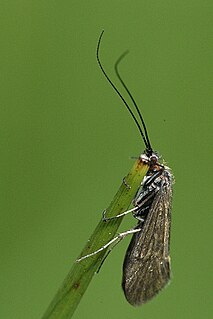
The Hydropsychidae are a family-level taxon consisting of net-spinning caddisflies. Hydropsychids are common among much of the world's streams, and a few species occupy the shorelines of freshwater lakes. Larvae of the hydropsychids construct nets at the open ends of their dwellings which are responsible for their "net-spinning caddisfly" common name.
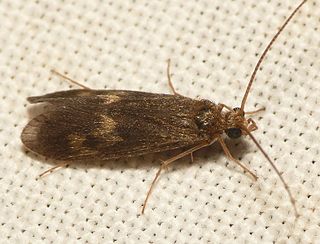
The Polycentropodidae are a family of trumpet-net and tube-making caddisflies. There are at least 30 genera and 720 described species in Polycentropodidae. The type genus for Polycentropodidae is Polycentropus J. Curtis, 1835.
Dolophilodes distinctus is a species of caddisfly in the Philopotamidae family. The larvae are found in streams in eastern North America where they build net-like retreats.

Lepidostoma is a genus of bizarre caddisflies in the family Lepidostomatidae. There are more than 150 described species in Lepidostoma.

Chimarra is a genus of little black caddisflies in the family Philopotamidae. There are more than 630 described species in Chimarra.

Leptocerus is a genus of long-horned caddisflies in the family Leptoceridae. There are more than 140 described species in Leptocerus.
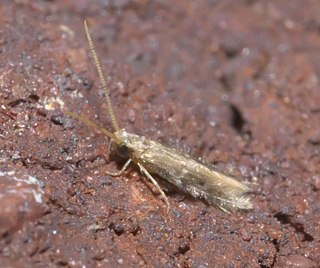
Oxyethira is a genus of microcaddisflies in the family Hydroptilidae. There are more than 210 described species in Oxyethira.

Oecetis is a genus of long-horned caddisflies in the family Leptoceridae. There are at least 410 described species in Oecetis.

Setodes is a genus of long-horned caddisflies in the family Leptoceridae. There are at least 230 described species in Setodes.
Halesochila is a genus of northern caddisflies in the family Limnephilidae. There is one described species in Halesochila, H. taylori.

Ceraclea is a genus of long-horned caddisflies in the family Leptoceridae. There are more than 140 described species in Ceraclea.
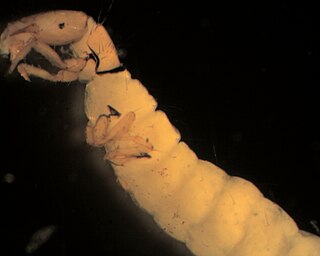
Wormaldia is a genus of fingernet caddisflies in the family Philopotamidae. There are more than 140 described species in Wormaldia. Fossil species have been described from the Late Cretaceous Burmese amber of Myanmar.
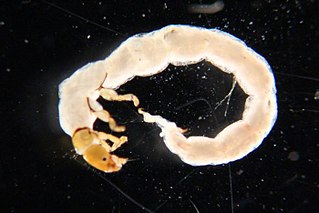
Polycentropus is a genus of tube maker caddisflies in the family Polycentropodidae. There are more than 190 described species in Polycentropus.
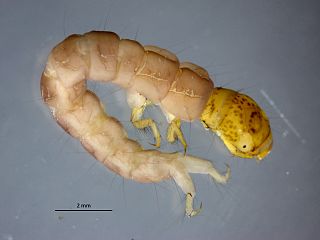
Plectrocnemia is a genus of tube maker caddisflies in the family Polycentropodidae. There are more than 120 described species in Plectrocnemia.
Onocosmoecus is a genus of northern caddisflies in the family Limnephilidae. There are at least three described species in Onocosmoecus.

Diplectrona is a genus of netspinning caddisflies in the family Hydropsychidae. There are more than 100 described species in Diplectrona.
Phanocelia is a genus of northern caddisflies in the family Limnephilidae. There is one described species in Phanocelia, P. canadensis.
Desmona is a genus of northern caddisflies in the family Limnephilidae. There are at least two described species in Desmona.
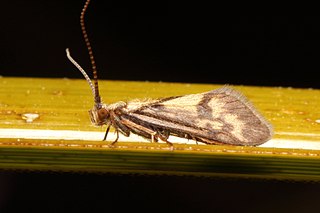
Conoesucidae is a family of caddisflies in the order Trichoptera. There are about 12 genera and more than 40 described species in Conoesucidae.















